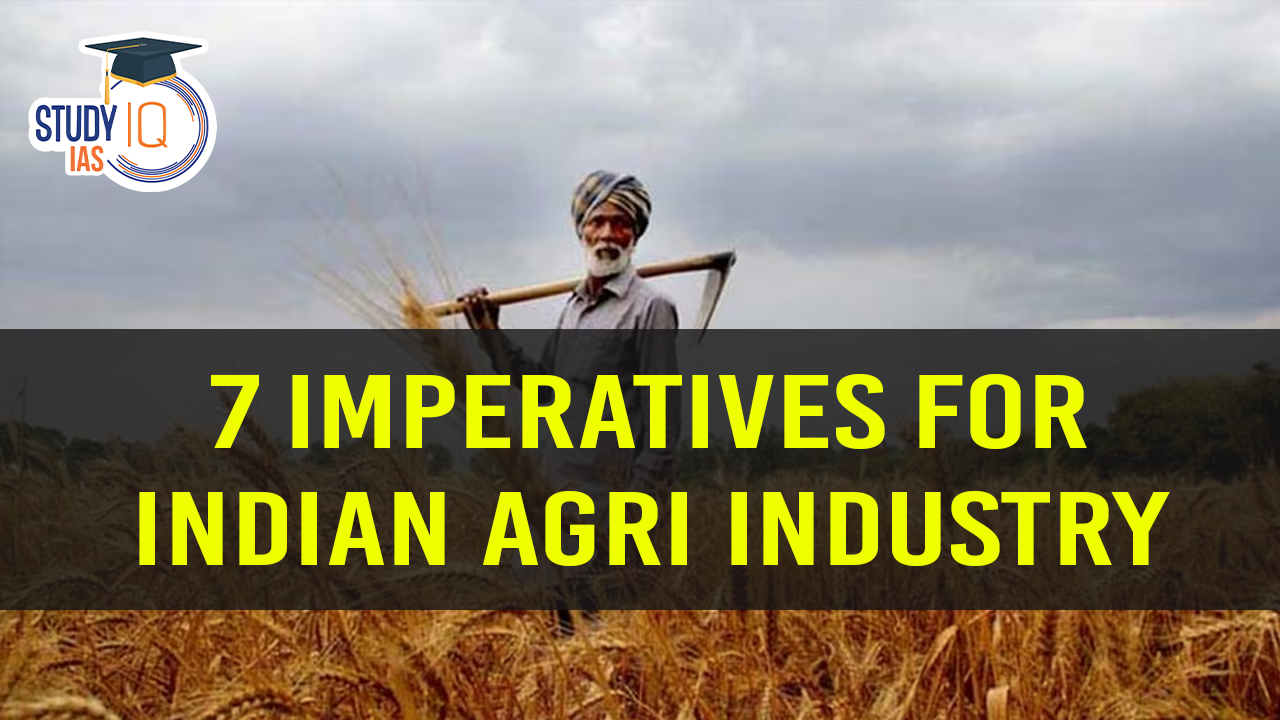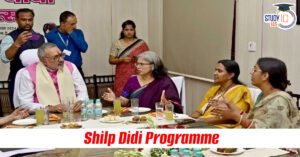Table of Contents
Context
India’s agriculture has made strides in productivity but continues to lag in the adoption of several modern technology innovations.
What are the 7 Imperatives to Build A Viksit Agri Economy by 2047?
- Use of AI in Agriculture: India is beginning to adopt AI for applications like weather forecasting, pest detection, and crop yield optimization, but usage is limited to tech-savvy farmers.
- Global Comparison: In the US and Europe, generative AI tools are widely used for precision farming, providing real-time agronomic insights.
- Recommendations:
- Develop vernacular AI platforms for smallholder farmers.
- Partner with AgTech companies to create affordable AI solutions.
- Disseminate AI-based advisory services through government programs.
- Regenerative Farming Practices: Some regions are experimenting with organic and zero-budget natural farming, but monoculture and chemical reliance dominate.
- Global Leaders: Countries like France and the US have structured policies supporting regenerative agriculture.
- Recommendations:
- Implement a national regenerative farming
- Encourage private sector-led R&D for capital-efficient agro-ecological practices.
- Robotics Adoption: Robotics in Indian agriculture is limited due to high costs and a large rural labor force.
- Basic automation tools exist, but advanced technologies like robotic harvesters are not accessible.
- Recommendations:
- Develop low-cost robotic solutions tailored for small farms.
- Establish AgTech hubs for testing and deploying automation technologies.
- Promote public-private partnerships to scale robotics innovation.
- Alternative Protein Market Development: The alternative protein sector in India is nascent, primarily driven by startups, facing challenges in affordability and scalability.
- Global Comparison: The EU leads in alternative proteins through government-backed initiatives and R&D.
- Recommendations:
- Collaborate with global leaders to enhance production techniques.
- Increase public awareness of lab-grown proteins.
- Digital Twins in Agriculture: Field trials in India are manual and time-consuming, delaying new crop technology deployment.
- Global Leaders: The US utilizes digital twin technology at scale to model field trials virtually.
- Recommendations:
- Partner with AgTechs to pilot digital twin projects.
- Train researchers in digital modeling techniques.
- Explore tax incentives for investing in digital twin solutions.
- Blockchain Technology: Blockchain applications in India are still experimental, primarily focused on food traceability with limited infrastructure and farmer awareness.
- Global Leaders: China has integrated blockchain across agricultural supply chains for transparency and fraud reduction.
- Recommendations: Focus on scaling blockchain solutions for export crops to enhance price realization for farmers.
- Climate-Smart Farming Techniques: Programs like PM-KUSUM promote renewable energy for irrigation; however, large-scale climate-smart initiatives are limited.
- Recommendations:
- Scale up micro-irrigation technologies.
- Invest in climate-resilient seed varieties and bio-based crop protection products.
- Leverage AI to develop localized climate advisory systems.
- Recommendations:


 UNEP Champions of the Earth Award: UN's ...
UNEP Champions of the Earth Award: UN's ...
 Shilp Didi Programme: Empowering Women A...
Shilp Didi Programme: Empowering Women A...
 Is the Falling Rupee a Cause for Alarm?
Is the Falling Rupee a Cause for Alarm?

























